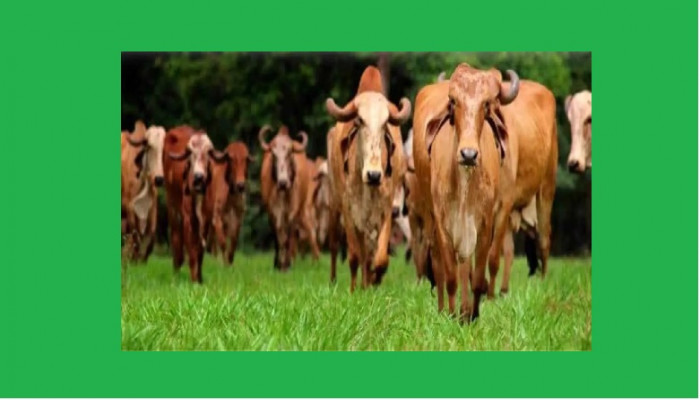Indian Dairy Industry: How to Make it More Competitive Across Domestic and Global Markets? Part-2
- In Economics
- 08:03 PM, Jul 27, 2025
- Viren S Doshi
Veterinary and Animal Health Services
Prevention is better than a cure. Veterinary services are focused more on treatment than on prevention.
Misdirected veterinary infrastructure, disease outbreaks (e.g. mastitis) among crossbred cross-country rampantly traded inadequately or poorly documented dairy animals and calf mortality impact productivity and animal welfare.
The remaining aspects of livestock management are also important and can help improve the competitiveness of the dairy sector by encouraging best practices related to animal shelters, vaccination, etc.
Then there are some side boosters, least disruptive but highly effective.
Subsidies may be given on standardised bioenergy and standardised biofertilizers produced from not-in-milk as well as in-milk livestock. This subsidy would make these highly useful fertilisers affordable compared to synthetic fertilisers that are heavily subsidised in our country.
Conventional less water consuming major crops - cereals, oilseeds and pulses - that give food, fodder, feed, fuel and fibre may be encouraged (at least by way of further rise in MSP minimum support price) in place of too much water consuming cash crops like potatoes which give virtually nothing for dairy animals, particularly in milk belts.
Such integrative measures would help dairying become more competitive, as dairying is conventionally synergistically allied with agriculture. Cyclical self-sustaining synergistic agrarian economy, which is time-tested and which sustained our ancient civilisation for millennia, must be restored as much as possible.
Financial Constraints
Smallholder farmers face limited access to affordable credit, quality feed and new costly technology. Serial measures have been taken by the government and cooperatives to address this.
Advanced Technology Adoption
AI, IoT, blockchain for traceability, automated milking, and modern cold chains are increasing efficiency and quality.
Equal focus is required on the processing and supply chain management to make it more skilled-unskilled labour efficient as well as energy and environment efficient.
Quality and Safety Issues
Milk adulteration, poor hygiene during milking, storage and transportation hinder product safety and reduce shelf life, though there has been considerable improvement.
Government Initiatives and Infrastructure
Programs like the National Dairy Plan, Dairy Processing and Infrastructure Development Fund (DIDF) support processing and supply chain modernisation.
Supply Chain and Growing Market
Shortcomings of supply chains, stockouts of certain products, insufficient cold storage in remote places, etc., restrict overall market access.
Urbanisation and changing consumer tastes spur demand for cheese, yoghurt, paneer, organic and speciality dairy items. India has a huge and aspiring domestic dairy market with the potential to at least double the per capita consumption based on preferences and potential for milk and milk products among aspiring millions of consumers. This is further reinforced by awareness about nutritional needs and increasing consumption in public nutrition programs funded by governments, with tremendous potential for further scaling up.
Indigenous Cow Breeds, their milk products’ market and Regulatory Challenges - FSSAI's Role
Scientific Aspects: India’s indigenous cows’ milk and milk products are traditionally favoured by many Indian consumers (and can be leveraged in international markets).
Quality milk / A2 milk: Indigenous breeds produce quality milk, and it has the added advantage of A2 type beta-casein milk, which has health benefits and better digestibility compared to A1 milk protein typical of some exotic breeds. But protein is not the only nutrient; many other nutrients give edge to “Bos indicus” zebu milk.
Our scientific community is to realise and confidently present the distinct benefits of brilliant indigenous breeds, their feed fodder conversion efficiency, their low emissions, the quality of their dung, the behaviour of the indigenous cows and bulls, and above all, the quality of their milk. It is not only the protein quality of the milk but also many other micronutrients, anti-oxidants, trace elements, bioactive substances, as well as essential amino acids and fatty acids that matter. To add to this, indigenous breeds are likely not to have antibiotics in their milk as they hardly suffer from infections requiring the use of antibiotics.
India is home to the world's best indigenous cow breeds like Gir, Kankrej and Sahiwal, but has virtually missed the opportunity to capitalise on their valued products due to policy inertia at the level of probably confused and ill-informed regulators.
FSSAI's current regulatory stance on A1/A2 milk labelling has complicated efforts to promote indigenous cow milk products effectively, limiting differentiation and market-building potential for many producers.
Despite India’s strong emphasis on conserving indigenous cow breeds and promoting unique quality milk derived from them, the Food Safety and Standards Authority of India (FSSAI) has faced criticism for regulatory steps that have inadvertently hindered this vital initiative. In 2024-25, FSSAI issued a notification requiring the removal of A1/A2 labelling from milk products to prevent allegedly “misleading” claims. This ill-informed regulation was seen as a setback by producers and marketers of indigenous cow milk, restricting their ability to distinguish and market these products as premium and culturally significant offerings. Fortunately, this notification was withdrawn immediately after issuance.
This crass measure lacked sufficient stakeholder engagement, particularly of smallholder farmers focused on indigenous breeds. The policy blurred the distinct identity of this unique milk, undermining efforts to build both domestic and international markets for indigenous milk products. Given the rising global interest in A2 milk, this regulatory stance limited India’s ability to capitalise fully on this niche segment, especially compared to countries like New Zealand expanding A2 production.
Support for breed conservation: This is reflected in government schemes focusing on protecting indigenous breeds and promoting their milk in niche markets. The disconnect between FSSAI discouraging or remaining mute on the marketing of milk of indigenous breeds and Rashtriya Gokul Mission / National Dairy Plan promoting indigenous breeds - the unique and valued jewels in Indian Dairy Livestock - highlights a regulatory challenge.
Cultural and Religious Aspects: Indigenous breeds are considered sacred and revered in Hindu society, and there is a large section of the population here and in diaspora and others abroad who prefer products of indigenous breeds' milk.
International Trade Challenges
The global dairy market is dynamic, influenced by production shifts, trade policies, consumer preferences and price volatility. The Global Dairy Trade (GDT) price average is around $4,589/MT (May 2025), though prices vary widely by product.
India remains a minor player in global dairy exports (<1% share) despite its production scale, primarily exporting to SAARC countries and the Middle East. Major exporters remain New Zealand, EU countries, the USA and Australia.
Cost competitiveness: India’s commodity prices are higher than major exporters like New Zealand or EU countries. This challenge must be taken head-on by powerful cooperatives in close coordination with the government. The Indian model of family farms need not be a hindrance in taking up this challenge, nor the hyped per-animal productivity. Retail price of most of the dairy products/stock keeping units is either low or on par with international markets, with potential to market unique products like ghee and indigenous cow milk products overseas.
Quality and standards compliance: Difficulty meeting stringent international food safety, traceability and certification norms. Well-organised cooperative sector can take up this challenge very well with the use of digital technology.
Tariffs and subsidies: Competing with subsidised dairy exports from dairy sectors of developed countries and facing trade barriers. Government must negotiate with sovereign counterparts to ensure a level playing field. Protection is not needed, but a level playing field must be ensured.
Logistics and cold chain: Inadequate export infrastructure for high-value, shelf-sensitive products. This challenge can be addressed by our competent cooperatives.
Limited export diversification: Most exports are bulk commodities (skimmed milk powder, ghee) while value-added exports remain low. There is scope for improvement here. Time for FSSAI to favourably regulate and standardise indigenous cow and buffalo milk products for domestic and international markets. With improved quality and certifications, India can target growing international markets, especially for cheese and niche indigenous cow milk products.
Implications of the Upcoming US-India Trade Agreement on the Indian Dairy Sector
Safeguard: India insists on certification that US dairy imports exclude animal-origin feed products due to cultural and vegetarian consumer preferences. This is considered a non-negotiable safeguard.
Economic Impact: Opening the dairy market to US imports could reportedly reduce domestic milk prices by 10 to 15% probably due to increased supply. Our resilient dairy sector can take up the challenges of global trade given the right push with determination.
Negotiation Challenges: While India is reluctant to reduce tariffs, US subsidies and protection to the American Dairy Sector are also an issue that India may have already taken up.
Broader Benefits: Beyond dairy, the deal may boost trade in organic foods, spices and promote investments in cold chain and precision farming technologies, which may be beneficial for farmers.
The trade agreement presents great opportunities for broader economic cooperation but poses major challenges for the dairy sector, requiring a delicate balance between protecting livelihoods and embracing trade benefits. We must prepare for sequential or selective opening of the dairy sector and take advantage of accessing overseas markets for our dairy products.
Conclusion
The Indian dairy sector is a pivotal component of the national economy and global dairy landscape, balancing enormous production scale with productivity and quality challenges.
Adoption of the National Breeding Policy, focusing on indigenous breed conservation alongside scientific genetic improvement, is vital for sustainable productivity gains.
Technological innovations, strengthened cooperatives, infrastructure development, and government support catalyse sector growth. However, to capture meaningful global market share, India must overcome cost, quality and logistical barriers with premium, differentiated products, including harnessing the growing niche for A2 and organic dairy products from indigenous breeds.
Addressing regulatory challenges, especially pertaining to FSSAI’s framework around milk labelling, is crucial for effectively protecting and promoting indigenous cow milk products domestically and internationally.
All the measures listed to overcome the challenges need to be worked upon and are likely to make dairying in India more scientific, more resilient and more competitive, presumably by at least 10 to 20%.
A kind of jolt may be in place to awaken the protected dairy sector to realise that the cooperatives themselves have tremendous potential to unlock the gates of global markets by being highly competitive; they could become knocking on the doors of global markets, both for mass products and niche or class products. It can't remain selectively open for only a few products for long, as part of protectionist arrangements.
This comprehensive approach will ensure the Indian dairy industry continues as a driver of rural livelihoods, nutritional security and economic growth well into the future.







Comments